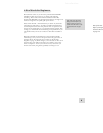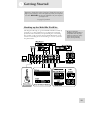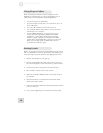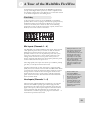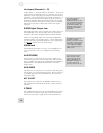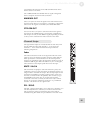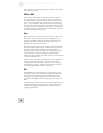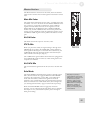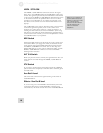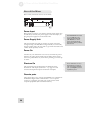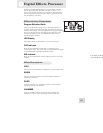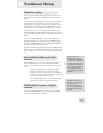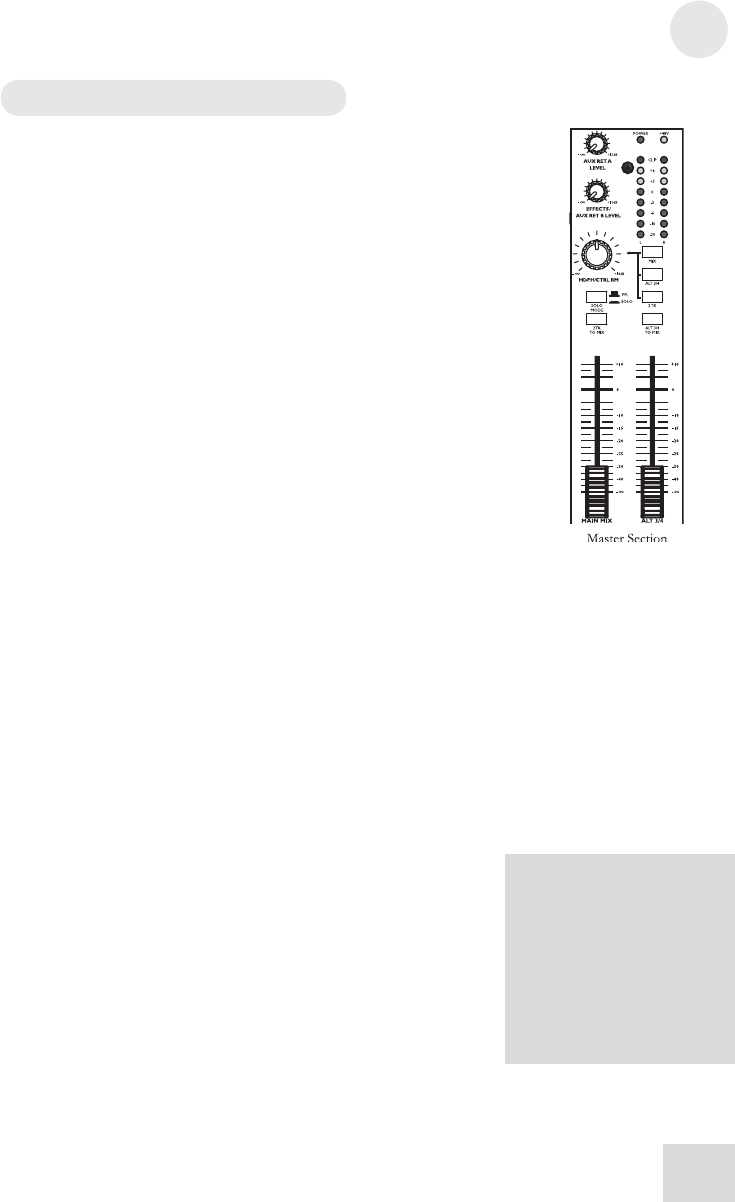
A Tour of the MultiMix FireWire
2
17
Master Section
The Master Section is the heart of the mixer, where the channel
inputs and aux returns all are mixed together and routed in various
ways.
Main Mix Fader
The signals from all channels and aux sends—excluding those that
are muted—are sent to the main mix. The MAIN MIX fader is the
one you’ll use to control the overall level of those combined
signals. This fader affects the levels of the signals sent to the
MAIN MIX OUT, the DIGITAL OUT (12FXD and16FXD
models only) and the 2-TRACK OUT. In its lowest position the
signal is cut off completely, and in the uppermost position you get
an additional 10dB of gain. In the 0 position the fader is at unity
gain.
Alt 3/4 Fader
This fader controls the output of the Alt 3/4 bus.
2TK To Mix
When you press this switch, the signal coming in through the 2-
TRACK IN gets routed to the MAIN MIX, joining whichever
other signals are already part of the main mix. Used this way, the
2-TRACK IN effectively becomes another stereo channel (but
without all the extras like pan, EQ, etc.).
The 2-TRACK IN signal combines both whatever is plugged into
the 2-TRACK RCA jacks and also any audio coming back to the
computer over Firewire.
Alt 3/4 To Mix
This switch adds the signal from the Alt 3/4 bus to the main mix
bus.
Solo Mode
The SOLO MODE switch affects the signals of channels whose
PFL / SOLO switches are engaged. When the SOLO MODE
switch is in the up position, you’re in PFL, or pre-fader listen
mode. This means that you’ll hear the signals of all soloed
channels as they sound before they pass through their respective
faders. You’ll need to be in PFL mode when you’re setting levels
(see “Setting Channel Levels,” page 12. This mode is post-EQ.
When the SOLO MODE switch is engaged (in the down
position), you are in SOLO mode. This means that you will hear
the output of every soloed channel (after it passes through its
fader, pan and EQ).
T
he purpose of seeing a
soloed channel’s level on the
LED meters is so that you can
see the true level of that
channel’s signal. For that
reason, the HDPH / CTRL
RM knob does not change the
LED meters’ reading—it
changes only the level at
which you’re listening to the
soloed channel.



